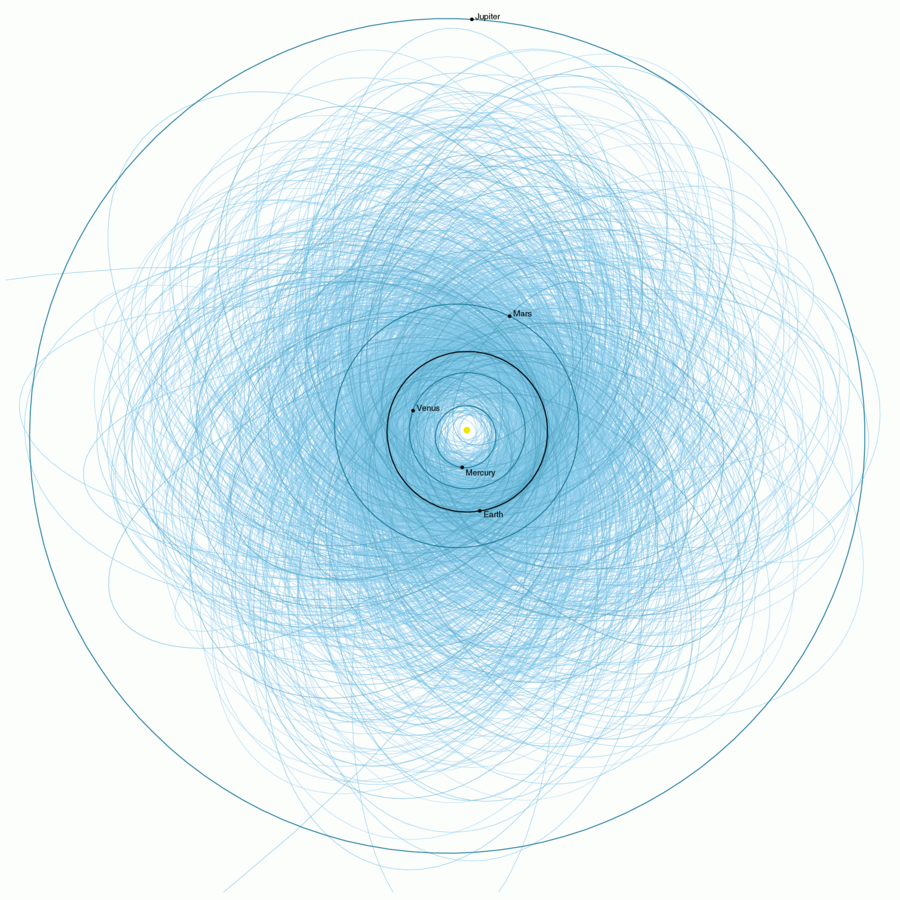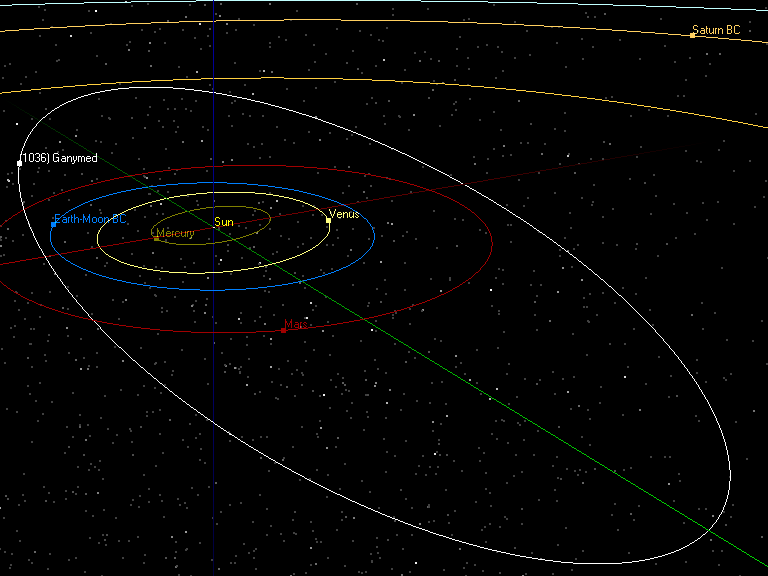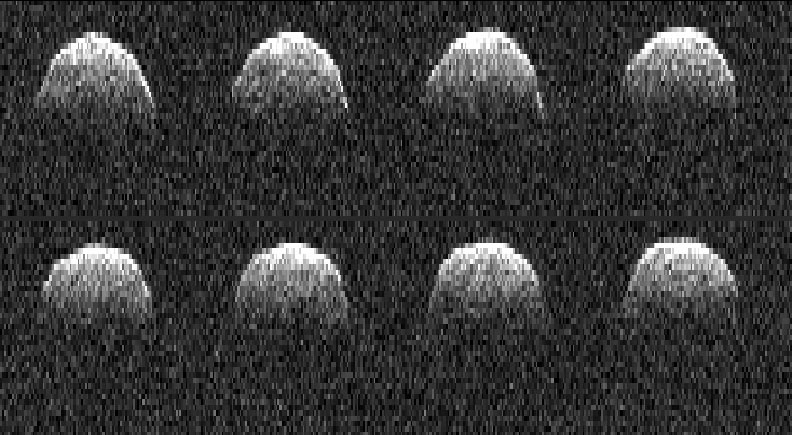Near-Earth Objects (NEOs) – Learn About Hazardous Asteroids
Hazardous Orbiting Objects Near Earth
Near-Earth Objects (NEOs) are comets and asteroids that have been perturbed by the planets into orbits which enter Earth’s neighbourhood. NEOs are divided into NECs (comets only) and NEAs (asteroids only), and further into asteroid subgroups called Atira/Apohele, Aten, Apollo, Amor and the Potentially Hazardous Asteroids (PHAs).
Why We Want To Find And Study NEOs
The NEC and NEA are of particular interest because of their potential to cause global damage if they were to impact Earth, but they are also of scientific interest as they relatively unchanged remnant debris from the solar system formation process some 4.6 billion years ago. Their detailed study would reveal clues to the chemical mixture of the primordial mixture from which the planets formed!
Definitions and Number of NEOs
An NEO is defined as an object that comes within 0.3 AU or about 50 million kilometres (30 million miles) of Earth’s orbit. A Potentially Hazardous Asteroid (PHA) is defined as a large asteroid (greater than 150m diameter) that comes even closer to Earth, within 0.05AU or 20 times the distance from the Earth to the Moon (known as Lunar Distance = LD).
Interesting numbers of NEOs as of late 2017;
- 16,835 NEOs have been discovered
- 106 near-Earth comets (NECs)
- and 16,729 near-Earth asteroids (NEAs)
- 884 of the identified NEAs are estimated to be least 1 kilometre in diameter (90% have been discovered).
- Asteroid '1036 Ganymed' is the largest NEA with a diameter of about 33 km
- 7,830 known NEAs are larger than about 140 meters in diameter (60% have been discovered)
- There are about 1 million NEAs about 40 meters in diameter (only 1% have been discovered), which have the potential for large scale, but not global damage.
- 884 of the identified NEAs are estimated to be least 1 kilometre in diameter (90% have been discovered).
- 1,842 NEOs are classified as potentially hazardous asteroids (PHAs)
- 157 known PHAs are estimated to be least 1 kilometre (km) in diameter! These would cause a global catastrophe if they struck Earth!
Frequency Of NEO Impacts With Earth!
Impacts of meteors and meteorites become increasingly infrequent the larger that asteroid. Astronomers believe that regular stony asteroids of various sizes impact with Earth as follows;
- Asteroids of 4 m diameter enter Earth's atmosphere about once a year
- Asteroids of 7 m diameter about every 5 years but release as much energy as the atomic bomb dropped on Hiroshima when they explode in the upper atmosphere
- The Chelyabinsk meteor which exploded over Russia in 2013 was about 20 metres in diameter and is the largest known natural object to have entered Earth's atmosphere since 1908
- Objects similar to the one which is believed to have exploded in Tunguska in 1908 (somewhere between 60 - 190m in diameter) are believed to hit Earth every 2 –3,000 years
- The nickel-iron meteorite that created the Meteor Crater in Arizona 50,000 years ago is believed to be 50m (160 feet) in diameter
- Objects with a diameter of 1 km hit Earth about every 500,000 years which would likely hit the ground and cause a major global catastrophe
You will frequently hear in the news of asteroids passing close to Earth, especially as astronomers identify the smaller more numerous objects which would have gone unnoticed in the past. Currently though, there are no known NEO that poses a risk of impact with Earth over the next 100 years, however, there thousands of smaller, but still potentially hazardous ones, to find and track.
Exploration of NEOs And Search Programs
Three near-Earth objects have been visited by spacecraft, NASA's Near Earth Asteroid Rendezvous (NEAR-Shoemaker) visited 433 Eros, the JAXA Hayabusa mission visited 25143 Itokawa and a third NEA was explored by CNSA's Chang'e 2 spacecraft during a flyby.
Since the United States Congress mandated that the large NEOs be identified as soon as possible, many different surveys have been performed under the umbrella name of "Spaceguard”. The major ones include the following programs;
- Lincoln Near-Earth Asteroid Research (LINEAR)
- Spacewatch
- Catalina Sky Survey (CSS)
- and Near-Earth Object WISE (NEOWISE).






























